Who is Hamas Blog
Did the Palestinian People Vote for Hamas?
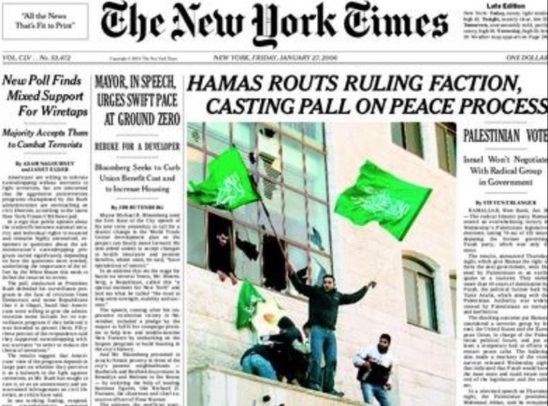
New York Times Cover showing Hamas election victory in 2006. Credit: Martin Kramer’s FB page.
The 2006 Palestinian Elections: A Surprise Victory for Hamas
The 2006 Palestinian legislative elections marked a turning point in the Israeli-Palestinian conflict. For the first time, the Islamic militant group Hamas participated in a democratic election - and won. This came as a shock, both to international observers and to the secular Fatah party which had dominated Palestinian politics for decades. But did the Palestinian people really knowingly vote for a group that Israel and the West designated a terrorist organization?
Voter Frustration Towards Fatah
The victory of Hamas cannot be separated from growing discontent amongst Palestinians towards the ruling Fatah party in the years prior to 2006. Fatah, the main political wing of the Palestinian Liberation Organization (PLO), had been criticized for rampant corruption and mismanagement. There was also frustration that years of Fatah-led negotiations had failed to deliver an independent state.
“Fatah has been in power for a long time but has achieved almost nothing,” said one Gaza resident when explaining his vote for Hamas. This disillusionment with the status quo drove many voters towards Hamas, which campaigned on the promise of clean governance and armed resistance against Israel.
Lack of Knowledge About Hamas?
However, there remains a debate around whether Palestinian voters really knew about Hamas’ extremist ideology when they cast their ballots. The group rebranded itself in the lead up to the election with a focus on its social welfare programs. And its campaign platform was largely indistinguishable from Fatah’s on key issues like negotiations with Israel.
Some analysts therefore argue that many Palestinians were simply casting anti-Fatah protest votes without fully realizing what Hamas stood for. Essentially, the argument goes that voters cared more about punishing Fatah than electing Hamas per se. This raises questions about whether Palestinians knowingly voted for Hamas’ radical agenda.
A Different View: Informed Voters
Hamas supporters raising Hamas flags. Credit: Nitzana Darshan-Leitner
Yet many observers reject the notion that Palestinian voters did not understand Hamas’ extremist positions. By 2006, Hamas had already built substantial support through years of providing social services to Palestinians in need. And its connections to violent attacks against Israeli targets were well known, even if the group toned down such rhetoric while campaigning.
After Hamas was elected, they refused to stop using violence or recognize Israel. But there were no big Palestinian protests against this. This might mean Palestinians were OK with these controversial Hamas policies when they voted for them.
Most people already knew a lot about Hamas prior to 2006. Hamas was open about using violence against Israel. So when Hamas stuck to their aggressive positions after the election, it didn’t surprise most Palestinians. They likely understood what the group was about when they voted them into power.
Overall, because people knew Hamas’ views beforehand, it casts doubt on the idea that Palestinians were fooled or shocked when Hamas kept calling for violence and rejecting Israel after their victory. M
The Aftermath: A Complex Legacy
Ultimately, whether the Palestinian people consciously voted for Hamas or not, the election sparked a complex chain of events that changed the status quo. The ongoing divide between the West Bank and Gaza stems back to 2006, as do periods of devastating violence between Israel and Gaza. For the foreseeable future at least, the legacy of Hamas’ surprise 2006 election will not fade away.
Who is Hamas Blog
Do Gaza civilians work in Israel?
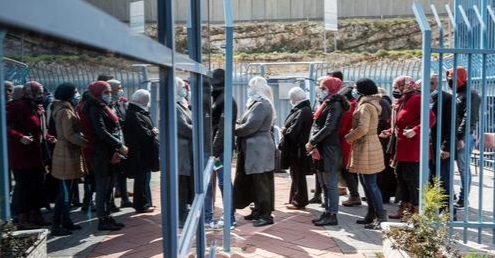
Palestinian workers crossing the border into Israel. Credit: Amiram Brutman’s FB page.
In the tumultuous landscape of the Middle East, the Gaza Strip stands out as a region of particular hardship and complexity. Among the many facets of life in Gaza, the opportunity for civilians to work in Israel has been a topic of significant discussion and controversy. This article delves into the intricate dynamics of Gazan civilians working in Israel over the past few years, exploring its impact on Gaza’s economy, and examining the broader geopolitical implications.
Gazan Workers in Israel: A Recent Overview

Palestinian construction workers in Israel. Credit: ‘Globes English’ FB page.
The history of Gazan workers working in Israel is marked by shifts in policy and circumstance. Following Hamas’ takeover of the Gaza Strip in 2007, Israel largely closed its borders to Gazan workers. However, in recent years, Israel has issued up to 15,500 work permits to Gazans, allowing them to cross into the country for employment. This shift marks a significant development, as these workers are among the first from Gaza to work officially in Israel since 2007.
Economic Effects on Gaza
The return of Gazan workers to Israel has had a notable, albeit limited, impact on the Gaza economy. While individuals can earn substantially more than what’s possible in Gaza, the overall effect on Gaza’s wider economy is minimal, but beneficial for the individual who will be able to fully support his family needs. With a heavily constricted economy under the Israeli-Egyptian blockade, the permits inject about $1 million a day into Gaza’s economy – a small amount given the scale of economic challenges faced by the 2.3 million population of the region.
Work Permits: Leverage and Lifeline
For many Gazans, these work permits are not just about employment; they represent a lifeline for better living conditions. The permits also give Israel a form of leverage over Hamas. For instance, Israel can decide to avoid giving further permits, thus affecting the individual economy of Gaza.
Involvement on October 7t, 2023 Attack Plans
A critical aspect of the discourse around Gazan civilians working in Israel is their alleged involvement in the October 7th attack. Reports indicate that individuals with work permits in Israel gathered information about Israeli cities and settlements in the south, contributing to the planning of this brutal attack. This development highlights a darker side of the work permit system, revealing how it can potentially be exploited for purposes other than economic relief. The incident underscores the complexity of this issue, where the need for employment and economic sustenance in Gaza intersects with security concerns in Israel. It’s a stark reminder of the intricate and often tense relationship between these two, influenced by a history of conflict and the ongoing geopolitical dynamics.
Current State of Work Permits
As of now, after the October 7 attack and the ground entry into Gaza in order to capture all those who were involved in the attack, Israel decided to ban residents of Gaza from entering to work, until further notice. In general, it is safe to say that the situation with work permits for Gaza civilians remains a delicate balance. Israel often describes these permits as goodwill measures. The permits are subject to Israel’s assessment of the security situation, with increase or decrease in the number of permits often linked to the level of calm or tension in the region.
Conclusion
In conclusion, the granting of work permits to Gazan civilians to work in Israel is a multifaceted issue, interwoven with economic necessity, geopolitical leverage, and the pursuit to give a lifeline to Gaza’s residents. While providing a critical source of income for individual Gazan families, the permits also serve as a strategic tool in the complex relationship between Israel and the Gaza Strip. The future of these work permits and their impact on both Gaza’s economy depends on the outcomes of the current “Iron Swords” operation and the ability of the Israelis to feel safe again in their own country.
Who is Hamas Blog
Thai Hostages in the 2023 Israel-Hamas Conflict
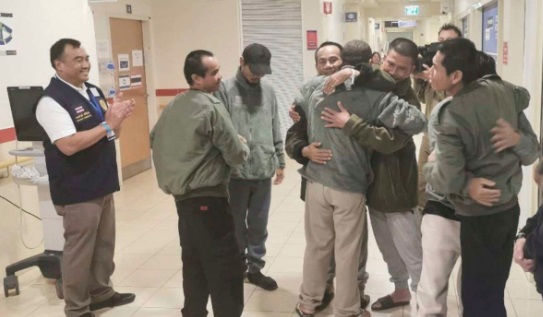
Thai hostages released by Hamas. Credit: ‘Arab News’ FB page.
The 2023 Israel-Hamas conflict witnessed a concerning humanitarian issue: the kidnapping and killing of Thai workers in Israel. This article explores the circumstances surrounding this crisis, providing a detailed analysis for those seeking to understand the broader implications of such conflicts on international labor and security.
The Situation of Thai Workers in Israel
Israel, before the Hamas attack, hosted around 30,000 Thai agricultural workers. The employment of Thais in Israel’s agricultural sector began in the 1990s, following the first Intifada in 1987, which led to a decrease in Palestinian labor due to Israeli movement restrictions. This shift made Thai workers, often working near the Gaza Strip, vulnerable to conflict-related dangers.
During the terror attack of the 7th of October, 2023 by Hamas, 39 Thai workers were tragically killed, and 32 were kidnapped, highlighting the high risk faced by these foreign nationals who choose to work in this area. The crisis underscored the vulnerability of migrant workers in conflict zones.
Conditions of Captivity for Thai Hostages
During their captivity under Hamas, the Thai hostages endured severe and perilous conditions. A released Thai worker revealed that Israeli hostages, held alongside them, were subjected to physical abuse, including beatings with cables. The Thai hostages, as he told them, were first held tied. Only after a few days did they have the option to stand and walk.
The October 7 Attacks
The October 7 attacks was a turning point in the lives of the Thai workers who already witnessed through the years many alarms and rocket attacks. The attacks leading to the death of Thai workers and the capture of over 200 Israeli hostages, by Hamas militants, did not discriminate between locals and foreign nationals, reflecting the indiscriminate nature of such terror. The impact on the Thai workers, far from their homeland and caught in a foreign conflict, was particularly poignant.
Diplomatic Efforts and Humanitarian Response
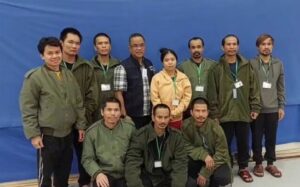
10 of the freed Thai hostages. Credit: ‘StandWithUs’ FB page.
The release of the Thai hostages was facilitated through diplomatic negotiations and international cooperation, involving various countries and organizations. The return of these hostages brought to light the severe health and psychological challenges they faced, necessitating extensive medical and psychological support. The situation highlighted the need for post-crisis care.
Conclusion
The kidnapping and killing of Thai workers in the 2023 Israel-Hamas conflict brought to the forefront critical issues related to the safety of migrant workers in conflict zones. It underscores the need for international cooperation in crisis resolution and the importance of comprehensive support systems for victims of such crises. The case of the Thai hostages serves as a stark reminder of the broader humanitarian implications of regional conflicts.
Who is Hamas Blog
Has the Red Cross Seen the Hostages in Gaza? – An Insight into the Ongoing Dilemma
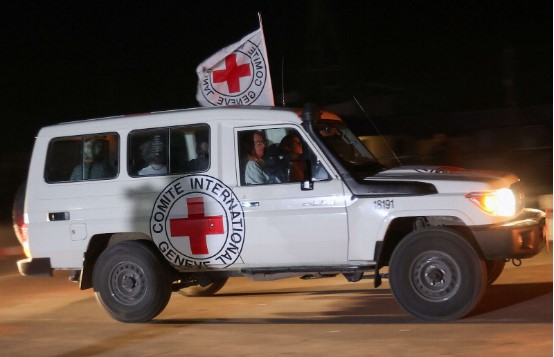
Red Cross vehicle driving Israeli hostages to the Israeli border, when being released. credit: Shay Saig’s FB page.
The situation in Gaza remains tense and complex, especially concerning the hostages held by Hamas since October 7, 2023. The health conditions of these hostages, including 40 infants and children, are unknown, a concern that falls under the purview of the International Committee of the Red Cross (ICRC). This article delves into the intricacies of this issue from multiple perspectives: the Israeli government, the hostages’ families, and the Red Cross.
Israel and US Demands from the Red Cross
The Israeli government has been vocal in its demands for the ICRC to act. Foreign Minister Eli Cohen, after meeting ICRC President Mirjana Spoljaric Egger, emphasized the urgency of the situation. Cohen highlighted the expectation that the Red Cross should prioritize visiting the hostages, assess their conditions, and ensure they receive necessary medical care. Despite taking part in the release and transferring to Israel process of the hostages in November, the ICRC has had no contact with the others, signaling a significant gap in their operations.
The Current Situation: Diverse Perspectives
Israel’s Stance
The Israeli Foreign Minister has stressed that none of the hostages have met with the Red Cross and lamented the lack of proof of life. The demands are not just about visits but also about obtaining information on the hostages’ whereabouts and conditions, especially the wounded and infants. Israel’s expectation is clear: the Red Cross should exert more pressure, including leveraging diplomatic relations to ensure the safety and release of the hostages.
The Hostages’ Families

Israeli hostages’ families. Credit: ACLJ FB page.
The families of hostages, while attending a press conference at the United Nations and also in the Red-Cross committee this month, expressed their agony and the urgent need for action. They demanded justice and the immediate return of their loved ones, underscoring the emotional toll this situation has taken as well as the health toll, as some of their loved ones might suffer from deepened health issues due to lack of treatments and medicines.
Red Cross’s Constraints and Efforts
The ICRC, bound by its need for neutrality and the agreement of conflict parties, faces significant challenges in accessing the hostages. ICRC President Spoljaric has acknowledged these constraints, noting the necessity of safe agreements for any intervention. The organization says, although no news were published regarding those sayings, that it has been advocating for the hostages, including direct contacts with Hamas and influential parties. However, their actions have been critiqued for not being forceful or transparent enough, especially in leveraging international relationships for diplomatic pressure, as well as their incapability of delivering the simple information about the hostages’ condition and if they are getting the treatment needed. Also, it is unclear up until now if the babies that are still hostages, are receiving suitable nutrition and are fed by breastfeeding or baby formula.
Conclusion: Families in the Dark Amidst Limited Red Cross Cooperation
The ongoing crisis in Gaza highlights a severe information void for the families of the hostages, who remain in desperate need of updates about their loved ones. This lack of information is compounded by the Red Cross’s limited cooperation in response to Israeli and US demands. The hostages, caught in the crossfire, continue to be victims not only of the conflict but also of the Red Cross’s constrained ability to provide necessary assistance. Their safety and well-being are increasingly jeopardized due to the absence of adequate medical care and attention, underscoring the urgent need for more effective intervention and communication.
-
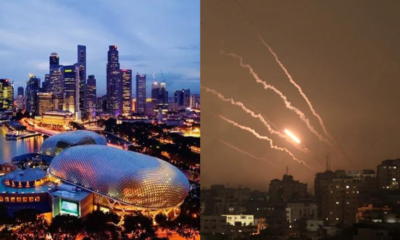
 News3 months ago
News3 months agoGaza could Have Been Singapore. Hamas Turned It Into a living nightmare
-

 News3 months ago
News3 months agoRape, slaughter, and atrocities—see the real face of Hamas
-

 News3 months ago
News3 months agoKidnapping elderly and children: Hamas are no heroes
-

 News3 months ago
News3 months agoShe died while saving lives.
-

 News3 months ago
News3 months agoTrigger warning: This is the atrocity that’s happening in Israel right now
-

 News3 months ago
News3 months agoMonsters: Yahya Sinwar and Hamas kidnapped 150+ children and women.
-

 Hamas War Strategy, Tactics, and PR3 months ago
Hamas War Strategy, Tactics, and PR3 months agoThe War Crimes of Hamas and ISIS in Exploiting Civilians
-

 News3 months ago
News3 months agoHamas turns a music festival into a massacre






